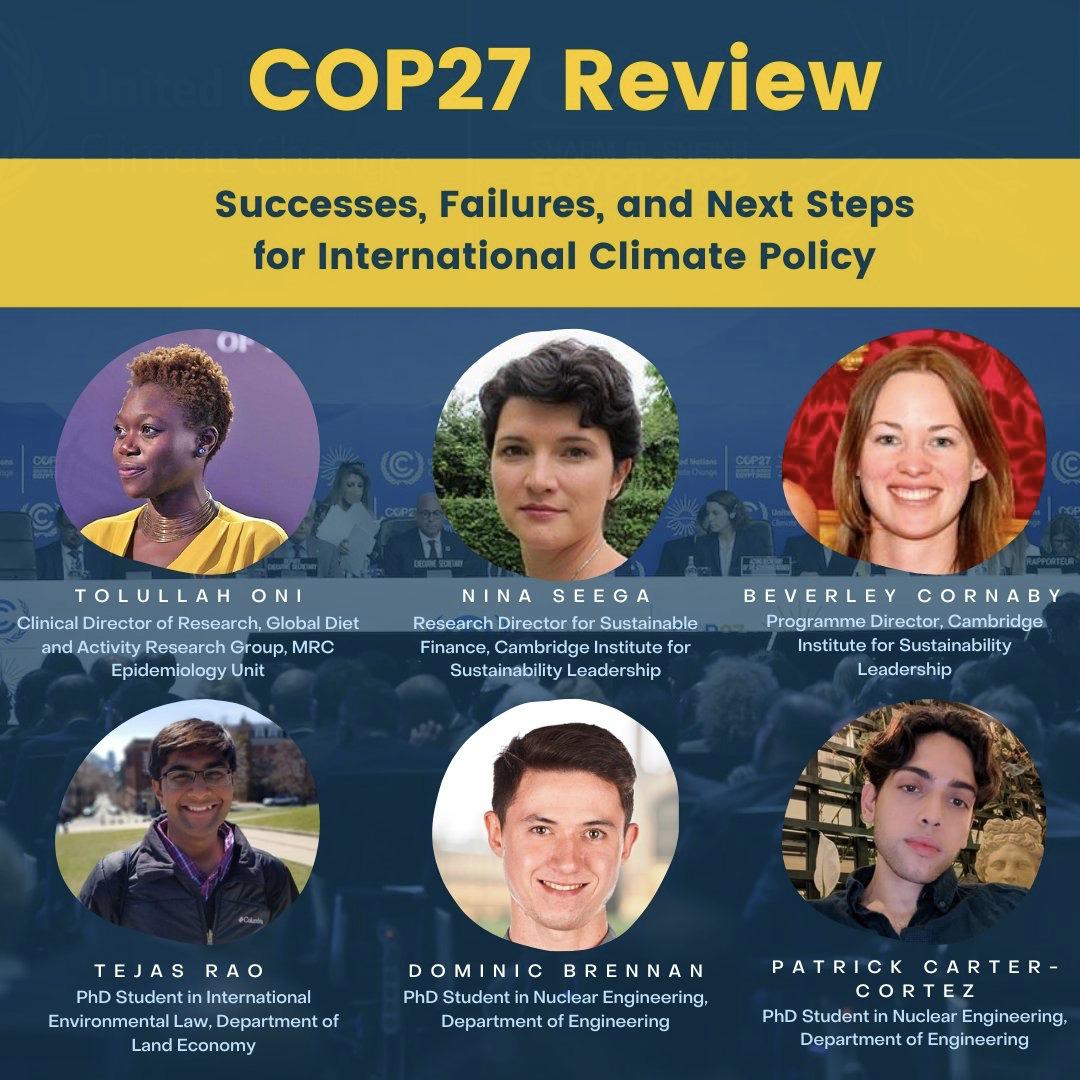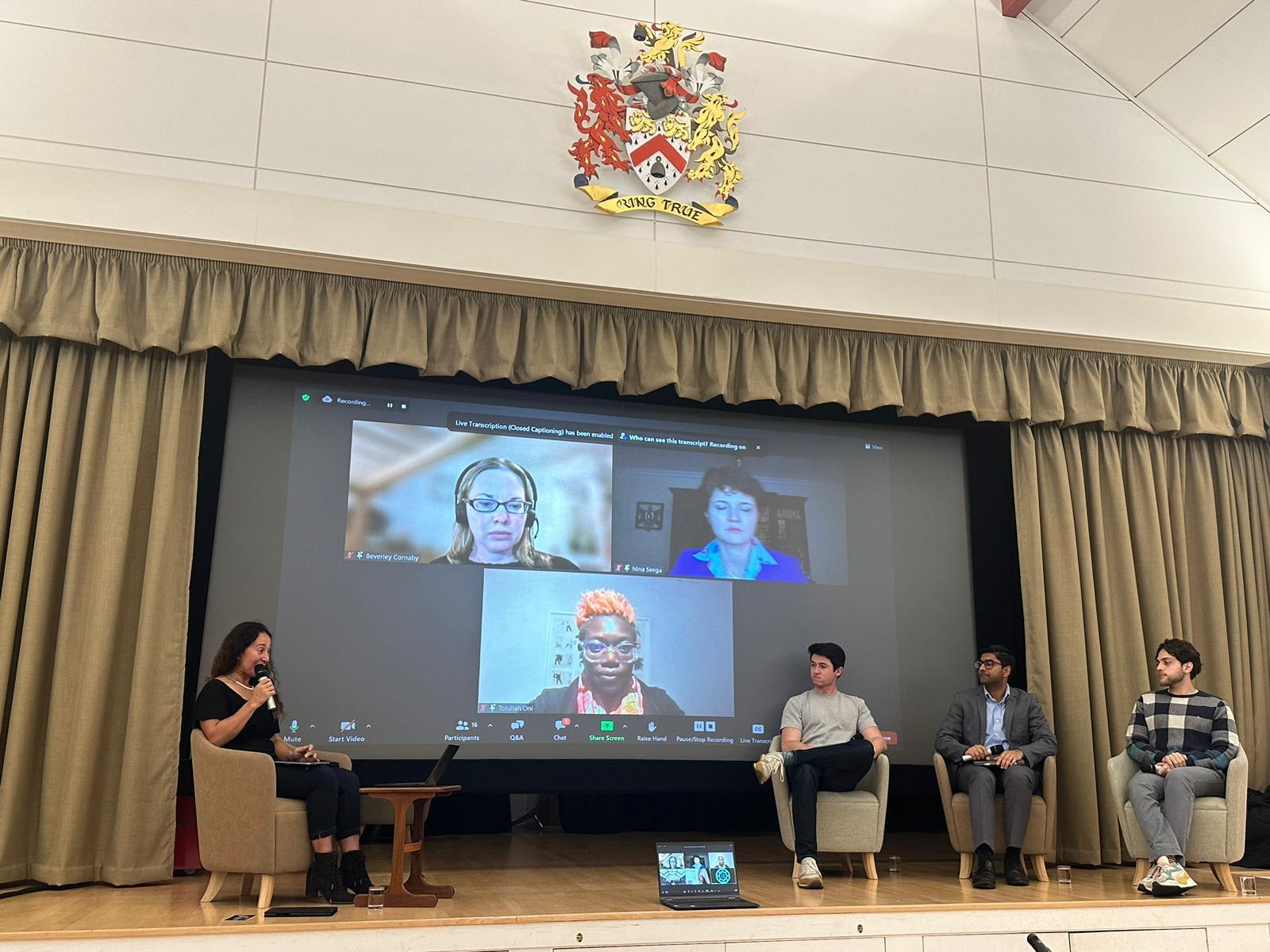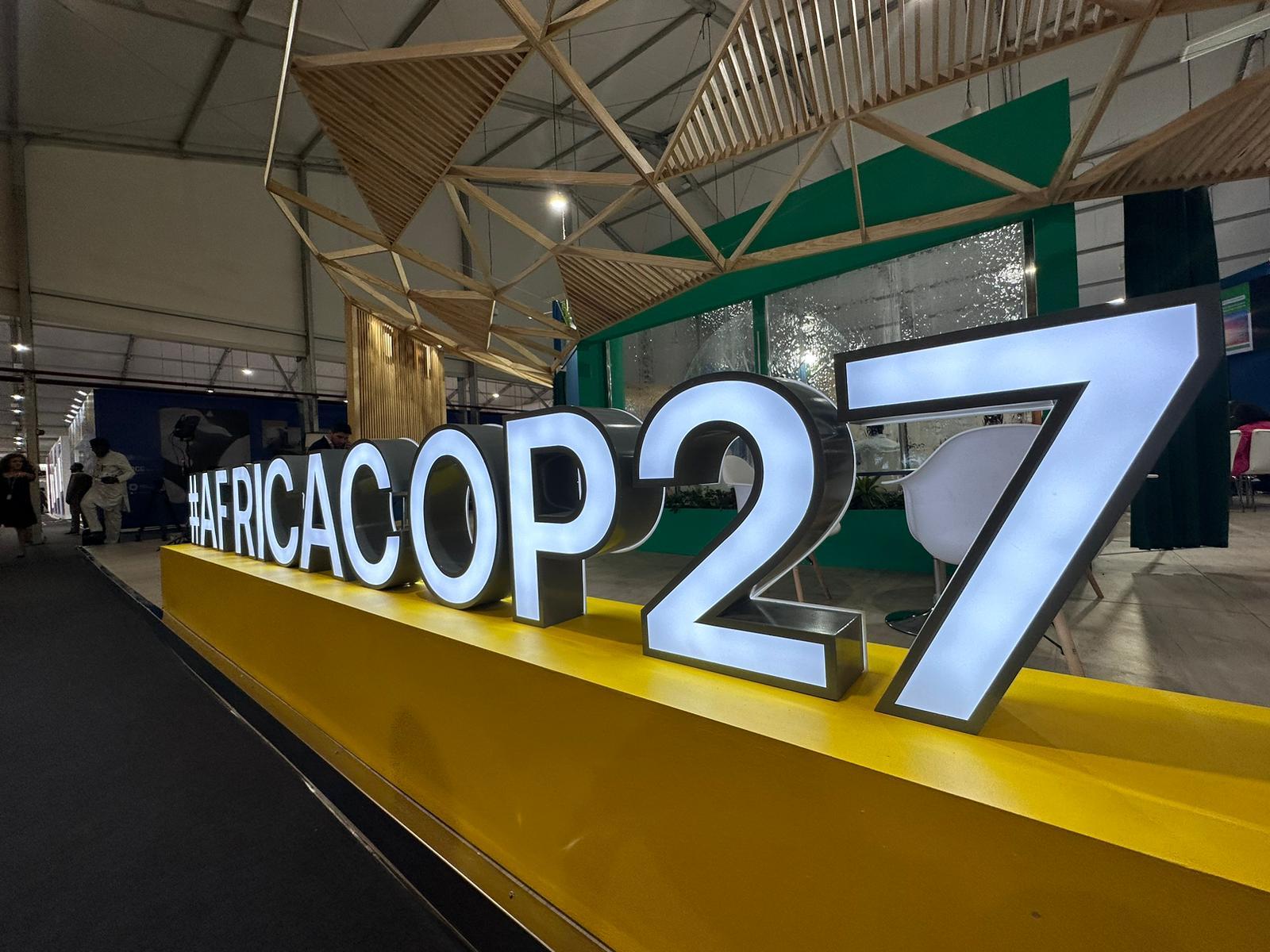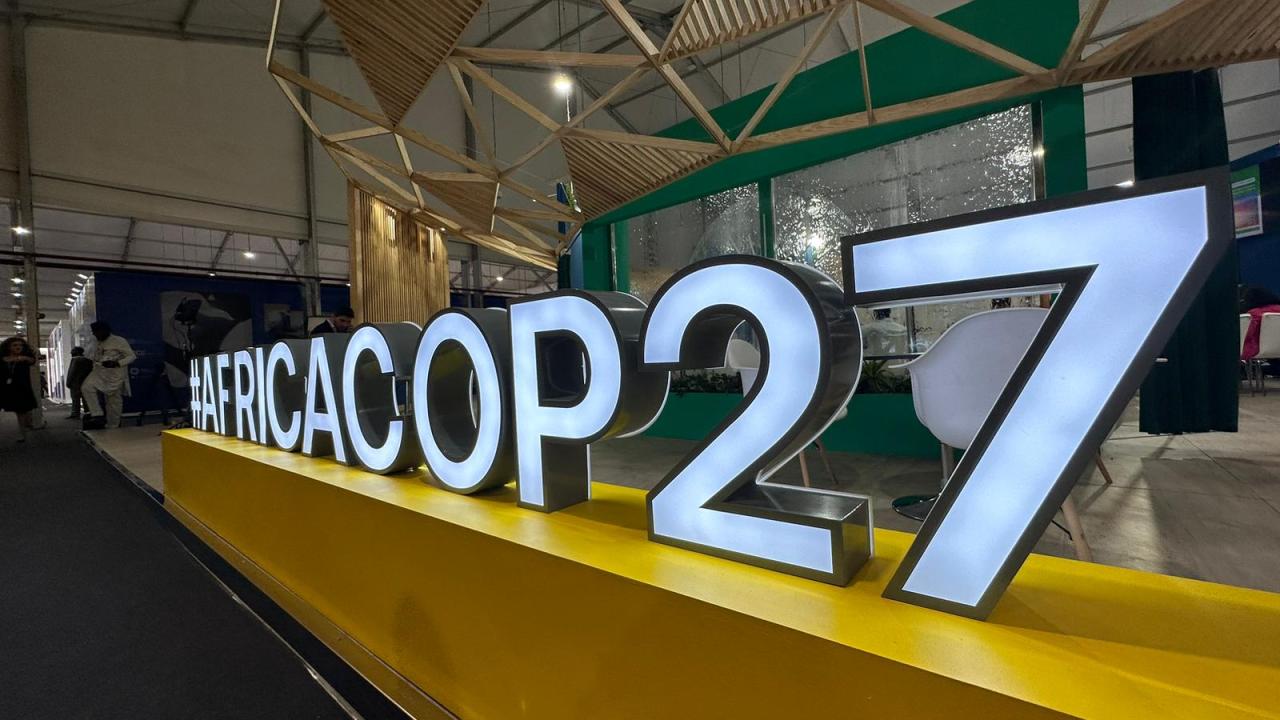It’s been almost one week since COP27 finished with the final gavelling last Sunday. While this year’s conference did not set a new record, it was definitely one of the lengthiest COPs in the UNFCCC’s history – both literally and figuratively speaking. Back home in Cambridge, I tweeted on Monday:
Back home from #COP27 . Intense 2 weeks. My head is still rushing, but life strangely went from 100 to 0. Feel the need to adjust back into a normal routine, but also there are a million things to do. I hope everyone is being kind to themselves & is taking the rest they need! 🙏🏼
— Friederike Hartz (@frhartz) November 21, 2022
This unique post-COP sensation seemed to resonate with quite a few people out there. And even now, almost a week after having returned from Sharm, I feel like I haven’t even properly processed everything that happened. While many comprehensive technical summaries of COP27 are being published these days – some of which I want to highlight for you below – I want to give you a personal summary of my two weeks at COP27, inspired by a COP review event I attended at Cambridge.
On a personal level, COP27 was both an exciting and exhausting journey, both mentally and physically. It was a fantastic experience in terms of learning and exchange. I was able to attend very interesting side-events, meet fascinating people and be at the literal heart of the global climate negotiations. As I wrote in one of my daily blogs, at COPs I always feel torn between this sense of excitement and hope because of the inspiring events and people I meet versus the reality of the negotiations and challenges we face. I think that for every delegate, no matter the role, COPs can be emotionally and physically draining. Someone joked on Twitter that “Personally, COP27 was a success, I didn’t cry not even once, I didn’t fall sick!” While I must admit that I teared up several times, not getting sick was definitely also an achievement of mine. (Also as a fun fact, I literally walked about 126.2km at COP27 – or 11.5km on average per day.)
Regarding the COP outcomes, I want to tell you a little bit more about an event I attended in Cambridge this week as a COP debrief.

This Wednesday, Cambridge Zero hosted a Post-COP event with a panel of university members who had attended COP27. The two central questions asked were:
- “What gave the most hope at COP27?” and
- “What were the biggest failures?”
Panelists agreed that the loss and damage fund was the central success of COP27.
Tolullah Oni, Clinical Director of Research of the Global Diet and Physical Activity Research Group at Cambridge’s MRC Epidemiology Unit, highlighted the centrality of the topic of health at COP27. It was the first time there was a dedicated health pavilion. Moreover, the critical issue of health made it into the cover text, or the 'Sharm el-Sheikh Implementation Plan', as it is referred to now. Similarly, she pointed out that youth also got mentioned which may have to do with the fact that for the first time, there was a youth envoy in the presidency team.
Tejas Rao, PhD Student in International Law at the Land Economy Department, complimented the formal launch of the 'Forests and Climate Leaders’ Partnership', thereby delivering on commitments made at COP26.
Nina Seega, Research Director for Sustainable Finance at the Cambridge Institute for Sustainability Leadership (CISL), highlighted the good cover text on technology and capacity building, and added that the COP27 negotiations and outcomes opened the door to a restructuring of the international finance arrangements, especially regarding international development banks.
Beverley Cornaby, Programme Director at CISL, highlighted the evolution of COPs themselves, saying she was positively surprised by the presence of civil society actors and other stakeholders in and beyond the pavilions. The latter is an interesting point of discussion which surfaced when COP27 was not even over. There has been criticism that COPs are increasingly being blown out of proportion, given the problem that they are trying to solve. Moreover, I heard from many sides that this COP felt more like a 'climate trade show', in light of the size and set up of the venue, the access challenges and the high number of delegates from the fossil fuel industry. At the same time, however, according to a Carbon Brief analysis, this COP saw the second highest attendance of NGO observers ever. Thus, I agree with Beverley’s observation that the presence of civil society was strong and highly commendable, given the restrictions and intimidations they faced from the host country.
The latter point was also taken up by Tollullah when asked about COP27 failures. She said that this COP had not been designed for inclusion and gave a number of reasons why, including the high costs for travel, accommodation and food (at the venue). Moreover, she described how the Green Zone (the publicly accessible part of COPs that is usually a hub of engagement and exchange for civil society in the context of the conference) was deliberately far away and inaccessible. This was my own experience as well. The Green Zone was poorly advertised and only after a couple of days I learned where it was (roughly) and how to get there. After hearing that it was virtually empty, I decided not to go. I met only one person who had actually gone there.
In terms of the actual outcome, another central failure mentioned by Nina was the missed opportunity on keeping us on track to 1.5 degrees, given the weak and repetitive language on mitigation and adaptation as well as the missed chance to build on COP26 and address the elephant in the room of 'phasing out' fossil fuels at this COP.
Nonetheless, the Cambridge Zero event ended on a hopeful note. There was some cautious optimism about COP28 which will take place in the United Arab Emirates next December. Tejas mentioned the changing demographics and economic interests of the UAE, which could bring a more positive spin on the next presidency than expected. As the UAE will soon work together with Egypt and step by step take over the presidency for next year, only time will tell if that prediction will come true.

Reflecting back on the event on Wednesday night, I wondered what gave me, personally, the most hope at COP27. As someone who has been working on the topic of loss and damage for quite a few years now and was able to witness first-hand the increasing public and political attention on the issue, especially since COP26, I was hopeful at the outset of COP27 and I was not disappointed. While it is true that things looked quite gloomy on the finance aspect until the last few days or even hours, what gave me the most hope was the inexhaustible and adamant fight for justice by developing country delegates and observers who, in negotiations, speeches, poems, videos and marches, expressed their unwillingness to go home without agreeing to anything less than a L&D fund. This historic success was the result of a struggle that has continued for more than 30 years. All the (side-)events I attended (and reported about here on the blog), the plenaries and protests I witnessed were testament to the tireless efforts of involved actors which I can but admire. But of course, the important work of making the fund operational starts now, and the next weeks and months heading up to COP28 (where the fund is supposed to be operationalised) will be of the essence to make this a meaningful and lasting victory.
Thinking about failures from COP, I agree with the panelists and countless observers that we achieved a historic success with the L&D fund. At the same time, however, while COP27 made a long overdue step in the right direction towards climate justice, the fund only treats some of the symptoms. Most of the Implementation Plan turns a blind eye on the root causes of climate change. For example, on fossil fuels, the Implementation Plan only repeats, word for word, the Glasgow Climate Pact ('including accelerating efforts towards the phasedown of unabated coal power and phase-out of inefficient fossil fuel subsidies') without adding any more commitment or substance to it. Another important point worth mentioning is the frustration and disappointment expressed by delegates and observers about this 'Africa COP' not living up to its name. As the Earth Negotiations Bulletin (ENB) reports in its COP27 summary, Africa was only mentioned twice in the Implementation Plan. This confirms the impression of observers that the concerns of the African continent did not get the action they deserved.

And finally, if I think ahead to COP28, COP29…I agree with the final note of evaluation from the ENB summary (p. 32):
“COPs will need to reinvent themselves as places where countries convene to demonstrate progress, uphold transparency and accountability, and raise ambition to the levels required to avert a climate crisis. While many are asking if COPs are fit for purpose, few offer answers of what should change. […] How the different visions of implementation and raising ambition will play out at future COPs is a question that remains and needs an urgent answer.”
Not yet had enough of COP27? Then you should check out the comprehensive COP27 analysis undertaken by Carbon Brief. They will take you through all the key facts, happenings and outcomes of COP27. Another great source that I have used here is the ENB Summary.
This brings me to the end of my COP27 journey. I would like to take the opportunity to thank the University of Cambridge, the Institute for Sustainability Leadership, Cambridge Zero and the Department of Geography for making my participation at COP27 possible. A special thanks goes to Jen Hayes from Cambridge Zero for uploading and managing my posts. Finally, I would like to thank you, the readers, for following the blog and for your lovely feedback.



